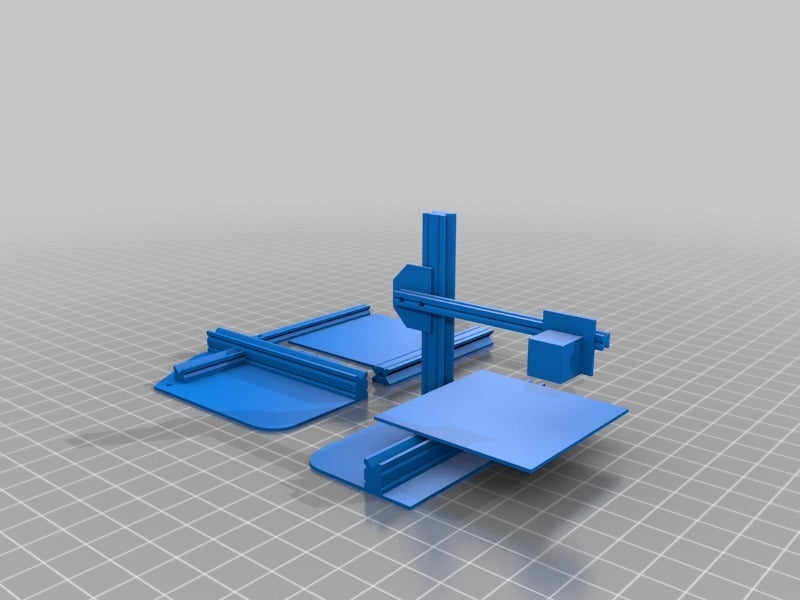
Tronxy X1 Toy Model
thingiverse
First Attempt to Replicate a Roughly 1:4 Model of the TronXY X1 3D Printer The goal here is to create a scaled-down replica of the popular TronXY X1 3D printer, but with a significant twist. We're aiming for a roughly 1:4 model, which means that all dimensions will be one-fourth those of the original. This includes the print bed size, build volume, and even the mechanical components. The first step is to gather as much information as possible about the TronXY X1's design. This involves studying its CAD files, technical drawings, and online documentation. We need to understand how each component fits together and how they interact with one another. Once we have a solid grasp of the original design, we can begin making measurements and calculations for our scaled-down model. This will involve converting every dimension from inches or millimeters to a fraction of those values. For example, if the original print bed is 300x300mm, our replica will need to be around 75x75mm. Next, we'll start creating detailed drawings and models of each component, taking care to ensure that they are accurate representations of their larger counterparts. This might involve using specialized software like Autodesk Inventor or SolidWorks to create precise 3D models. As we work through this process, it's essential to keep in mind the limitations of our scaled-down model. For instance, the smaller print bed size will undoubtedly affect the printer's overall performance and capabilities. We'll need to consider how these changes might impact the printing quality and speed. With our detailed designs and measurements in hand, we can start building the replica. This involves carefully crafting each component using materials like 3D printed plastic or CNC-milled aluminum. Every step of the assembly process requires attention to detail and a deep understanding of the original design. Throughout this project, it's crucial to regularly compare our replica against the original TronXY X1. This will help us identify any discrepancies or areas where we might need to make adjustments. By working closely with the original design, we can ensure that our scaled-down model is both functional and accurate. In the end, a successful 1:4 replica of the TronXY X1 3D printer will not only be an impressive feat of engineering but also serve as a valuable learning tool for anyone interested in 3D printing. By exploring the intricacies of this technology at a smaller scale, we can gain a deeper appreciation for its complexities and nuances. The replicated model will undoubtedly face some challenges due to its reduced size, but with careful planning and execution, it should be possible to create a functional and reliable printer that accurately represents the original design. This project is an exciting opportunity to explore the possibilities of 3D printing at a smaller scale and push the boundaries of what's thought possible.
With this file you will be able to print Tronxy X1 Toy Model with your 3D printer. Click on the button and save the file on your computer to work, edit or customize your design. You can also find more 3D designs for printers on Tronxy X1 Toy Model.
